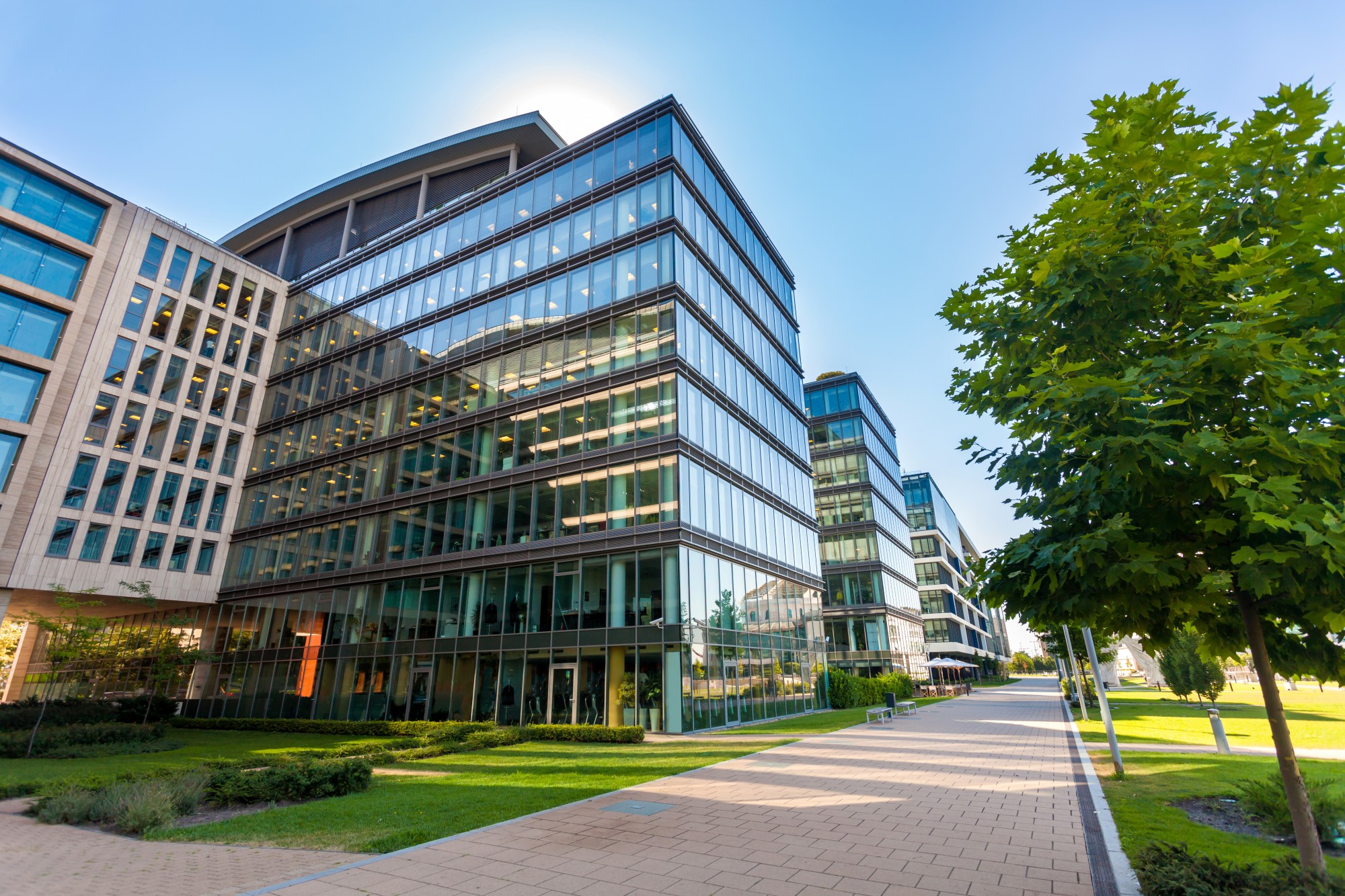Commercial, Energy Efficiency, GHG Emissions - April 19, 2023 - By Diana Lee, IMT
Top 3 Trends from the 2023 Green Lease Leaders
The Institute for Market Transformation (IMT) and the U.S. Department of Energy’s (DOE) Better Buildings Initiative announced the 2023 Green Lease Leaders at the Better Buildings, Better Plants Summit. Launched by IMT and DOE’s Better Buildings Initiative in 2014, Green Lease Leaders sets the industry standard for what constitutes a green lease. Each year, the program recognizes landlords and tenants who modernize their leases to spur collaboration on energy efficiency, decarbonization, cost savings, health, and other environmental and social issues.
This year, the program expanded by 31%, including 34 organizations receiving Green Lease Leaders recognition for the first time. Additionally, six companies earned Platinum-level recognition, with a 42% increase in Gold-level awardees. The overall program growth reflects a wide acceptance that green leases are a critical tool for improving buildings and meeting corporate environmental and social goals.
This year’s Green Lease Leaders represent portfolios totaling three billion square feet, comprising a diverse range of buildings, from large and small commercial offices to data centers and industrial and multifamily buildings. The cumulative floor area of all Green Lease Leaders is now more than 6.4 billion sq. ft. of building space.
There is more pressure than ever for businesses to set and meet decarbonization goals, such as net zero and science-based targets. To achieve these targets, a growing number of companies have found success by revising traditional leases. Use of these updated leases, called green leases, is growing rapidly among forward-thinking organizations.
Green Lease Leaders sets the standards for these leases, and partners with the Department of Energy to recognize organizations that establish and implement them. Here are the top three trends and what they tell us about the state of green leasing.
Trend 1: Green leasing is becoming a best practice
Green Lease Leaders expanded by 31%, compared to last year. Approximately 175 organizations have participated in Green Lease Leaders since 2014. This year, almost half of Green Lease Leaders winners are new to the program, demonstrating increased use of green leasing. This illustrates growing recognition that green leases apply to a variety of properties and ESG goals.
Green leasing is also being implemented in new property types and property types where it can be more challenging to implement ESG strategies. This year, Green Lease Leaders recognized our first military housing portfolio. There were more industrial winners, retail winners, and a healthcare winner. We were also excited to recognize our first Platinum multifamily winner.
One 2023 Silver Green Lease Leader has shared that their goal is to use the Green Lease Leader recognition to engage team members who may not typically support ESG activities. For example, green leasing necessitates that the leasing team and ESG team work together rather than silo ESG responsibilities.
Trend 2: Green leases are relevant around the world
Twenty-eight percent of 2023 Green Lease Leaders winners are outside of the U.S. This is an increase of 80% from last year. These international Green Lease Leaders have portfolios that represent Canada, Europe, Australia, Mexico, and the same property types as their U.S. cohort.
The increase in international recognition indicates that green leases are pertinent to many geographies, which have a variety of building performance regulations and traditional lease structures, with different landlord and tenant incentives to improve their building’s ESG performance. For example, according to JLL’s Green Leasing 2.0 report, “in Australia, owners typically pay for both operational and capital expenses and are highly incentivized to perform building upgrades. In the UK, occupiers pay for operating costs through service charges, and in the U.S., occupiers in triple net leases are responsible for operating expenses.”
Trend 3: Companies are ready to take green leasing to the next level
There was a 42% increase in Gold winners this year, demonstrating greater execution of green leases. We also recognized six Platinum award winners, who achieved more stringent award criteria. These statistics show the industry is ready to take green leasing up a notch.
The next evolution of green leasing is performance-based leasing. A performance-based lease aims to further clarify landlord and tenant responsibilities and holds both parties accountable for the ESG performance of their building. With the emergence of building performance standards and increased ESG scrutiny, a performance-based lease can be a powerful tool to help both the landlord and tenant comply with new stringent performance regulations and meet their own aggressive decarbonization goals.
Can you teach an old lease new tricks? Yes. This year’s winners show that green leasing is a flexible tool that can be customized to support many companies’ changing ESG needs across different geographies, property types, and regulations. Their achievements show us that green leasing is a valuable solution in a shifting real estate market, and an increasingly important part of business strategy and operations.
This column originally appeared as a blog on the IMT website.
 Diana Lee is Associate Director of Business Engagement at IMT. For more than 25 years, the Institute for Market Transformation (IMT) has partnered with government, business, and philanthropy to improve the spaces where we live, work, and play. IMT focuses on creative and practical solutions that catalyze greater investment in high-performing, energy-efficient buildings. IMT offers hands-on technical assistance and market research, alongside expertise in policy and program development and deployment and promotion of best practices and knowledge exchange. Our innovations have helped reduce carbon emissions and energy costs across billions of square feet of real estate in major U.S. cities; empowered landlords and tenants to overcome barriers to mutually-beneficial building improvements; and increased market demand for better buildings. Visit us at www.imt.org and follow us on Twitter @IMT_speaks.
Diana Lee is Associate Director of Business Engagement at IMT. For more than 25 years, the Institute for Market Transformation (IMT) has partnered with government, business, and philanthropy to improve the spaces where we live, work, and play. IMT focuses on creative and practical solutions that catalyze greater investment in high-performing, energy-efficient buildings. IMT offers hands-on technical assistance and market research, alongside expertise in policy and program development and deployment and promotion of best practices and knowledge exchange. Our innovations have helped reduce carbon emissions and energy costs across billions of square feet of real estate in major U.S. cities; empowered landlords and tenants to overcome barriers to mutually-beneficial building improvements; and increased market demand for better buildings. Visit us at www.imt.org and follow us on Twitter @IMT_speaks.
Read These Related Articles:
Stay Up-To-Date












